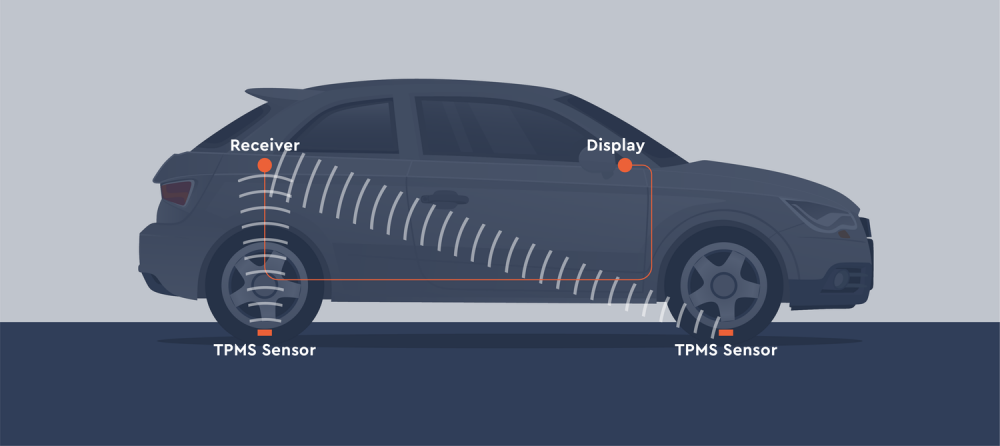Tyre Pressure Monitoring Systems (TPMS)
What is TPMS?
A Tyre Pressure Monitoring System (TPMS) is an electronic system designed to monitor the air pressure inside pneumatic tyres. This allows the driver to gauge whether the tyres are within the legal and safe perimeters of tyre pressure.

What does TPMS do?
TPMS improves the safety of the driver and surrounding drivers, as properly inflated tyres have a more reliable and shorter braking distance. TPMS also:
- Lowers fuel consumption, as under-inflated tyres increase fuel usage over time.
- Reduces CO2 emissions, reducing the negative effect on the environment.
- Reduces the risk of tyre wear.
How does TPMS work?
TPMS typically relies on wheel speed sensors, which measure the rate of revolutions each wheel is making. On-board computer systems use this data to compare it with other information such as vehicle speed. Based on this information, the program can decipher the relative size of the tyres and whether they are under or over-inflated. If the results show the tyres are not at optimum pressure, it will alert the driver on their dashboard.